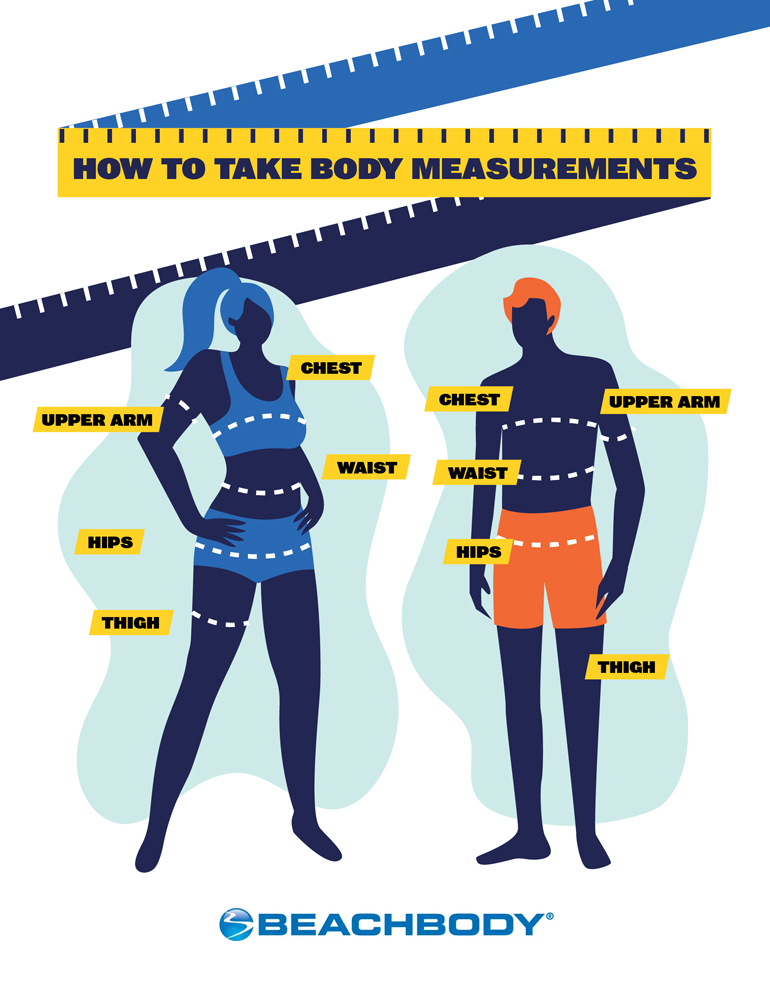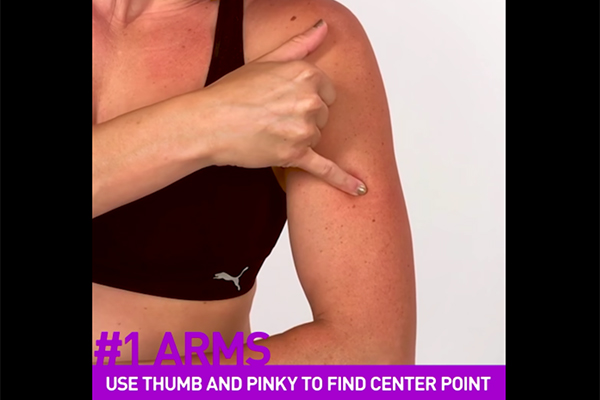How to Take Body Measurements the Right Way
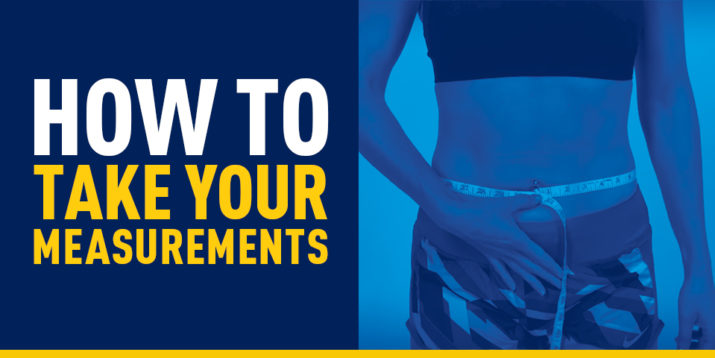
Taking your own body measurements can help you track your fitness results better than relying on the bathroom scale — especially true if you’re trying to lose fat and gain muscle.
Why? Well, the scale only measures your weight — not your body composition.
So if you’re losing fat and gaining muscle, you’re going to see a difference in the way you look — but it’s totally possible the scale won’t budge.
And if you’re relying solely on the scale to track your results, you may think you’re not making progress.
Whether you’re trying to lose weight or make gains, body measurements can show you the bigger picture and give your confidence a boost.
“Since you can be losing body fat while building muscle, it’s nice to see the inches come off — or stack on — even when the scale doesn’t signify much change,” says Beachbody fitness expert Cody Braun.
And from a health perspective, knowing your measurements can clue you in to health risks.
For example, if your waist measures more than 35 inches (for a woman) or 40 inches (for a man), you may be at a higher risk for heart disease and type 2 diabetes, according to the National Heart, Lung, and Blood Institute.
Here are the ins and outs of taking your own body measurements.
Five Key Body Measurements
There are five primary areas of your body you should measure: arms, chest, waist, hips, and legs. And don’t forget to weigh yourself each time you take your measurements!
Consistency is key, so make sure you’re taking your measurements the same way each time.
1. How to measure your arms
Keep the arm you’re measuring relaxed by your side, and wrap the measuring tape around the peak of your bicep muscle belly — the thickest part of your upper arm.
(Alternatively, you can put your thumb on the opposite shoulder and stretch out your pinkie to find the center of your upper arm.)
The tape should lie flat and fit securely around your bicep.
Then get ready for your “sun’s out, guns out” Instagram post!
2. How to measure your chest
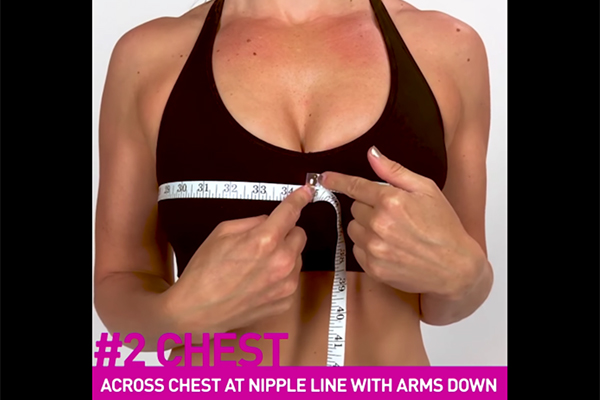
Measuring your own chest can be a bit tricky (since you need to raise your arms slightly while positioning the measuring tape in place).
Start by wrapping the measuring tape around your chest at the nipple line while your arms are extended.
The tape should lie flat against your body, lie straight around your chest, and feel snug without digging into your skin.
Once the tape is in place, bring your arms back to a relaxed position, make any necessary adjustments, and check your measurement.
3. How to measure your waist
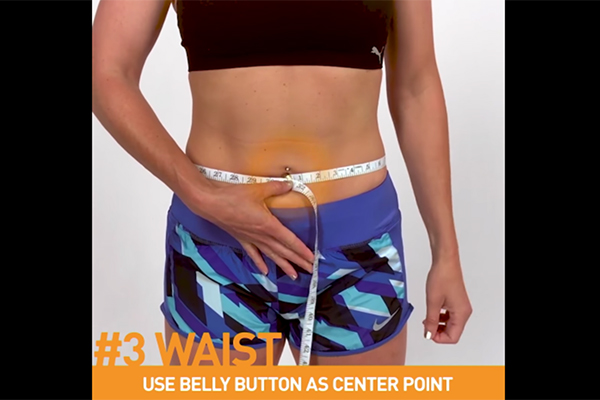
Wrap the measuring tape around your waist at your belly button. Make sure the tape is straight all the way around, sits flat on your skin, and is snug without digging in.
Don’t suck in your stomach — breathe out normally, and check your measurement after you exhale.
4. How to measure your hips
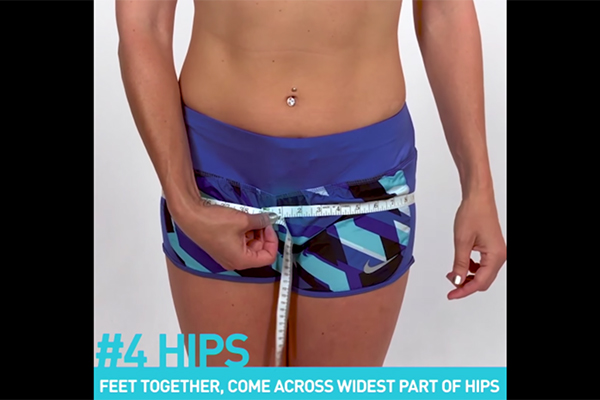
To measure your hips, wrap the measuring tape around the widest part of your butt.
Again, check that the tape is straight all the way around, lies flat, and fits securely around your hips.
5. How to measure your legs
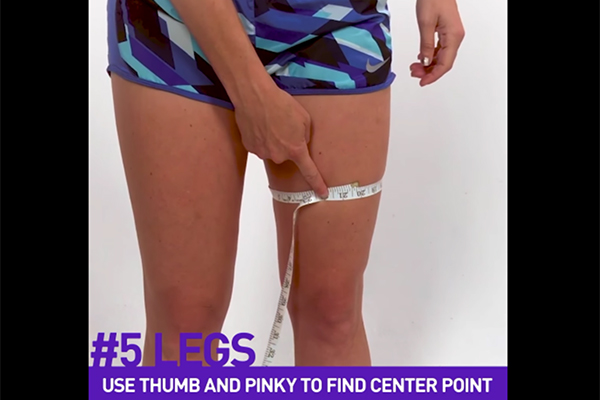
While standing, measure your thigh by wrapping the tape around your leg at the midpoint of the thigh.
(Alternatively, you can put your pinky on your knee and stretch out your thumb to find the center of your thigh.)
Make sure the tape lies flat and straight the whole way around. Check your measurement at the point where the two ends overlap.
How Are Body Measurements Different for Men and Women?
There are some numerical differences, Braun says: Men are typically widest at the chest, whereas women tend to be widest at the hips.
And men tend to store fat in the abdomen, while women store it in the hips and thighs.
But in general, men and women take their body measurements in the same spots.
